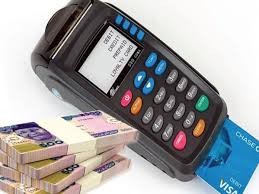Compressed nerves are a common source of pain and discomfort that can affect various parts of the body. Whether you’re experiencing tingling sensations, numbness, or sharp pain, it’s crucial to understand how a pinched nerve is diagnosed to receive the appropriate treatment. In this guide, we will explore how is a pinched nerve diagnosed, what to expect during a diagnosis and the role of South Valley Neurology in helping individuals with nerve-related issues.
How is a Pinched Nerve Diagnosed?
Diagnosing a pinched nerve involves a series of steps and medical evaluations to determine the underlying cause and severity of the condition. Here’s a detailed look at how healthcare professionals diagnose pinched nerves:
1. Medical History and Symptom Assessment
This is the first thing that doctors do to figure out if someone has a pinched nerve. What are your symptoms, how long have they been going on, and what might have caused them? Your doctor will ask you these questions. It’s crucial to provide accurate information to help in the diagnostic process.
2. Physical Examination
A physical examination is a fundamental aspect of pinched nerve diagnosis. Your doctor will test your strength, reactions, and range of motion in the affected area through several tests during this evaluation. Also, they will look for signs of muscle loss, stiffness, or changes in how the person feels.
For example, if you are experiencing a pinched nerve in your neck (cervical radiculopathy), your doctor may perform the Spurling’s test, which involves gently tilting your head to one side to reproduce the symptoms. This can help confirm the presence of a pinched nerve in the neck.
3. Imaging Studies
In many cases, imaging studies are essential to visualize the affected area and confirm the diagnosis. Images like X-rays and magnetic resonance imaging (MRI) are often used to find out if someone has a pinched nerve.
X-rays: X-rays are helpful in assessing the condition of bones and may reveal issues like herniated discs or bone spurs that could be contributing to nerve compression. While X-rays are valuable, they may not provide detailed information about soft tissues like nerves themselves.
MRI: MRI is a great way to see nerves and other soft tissues. You can get clear pictures of the spinal cord, nerve branches, and other things around it. People usually get an MRI when their symptoms don’t go away or when their doctor thinks they might have a more serious problem, like a herniated disc or spine stenosis.
4. Electromyography (EMG)
Electromyography, commonly referred to as EMG, is a specialized diagnostic test that evaluates the electrical activity of muscles and the nerves controlling them. Little electrodes are put on the skin during the test to record the electrical messages that the muscles and nerves send out. EMG can help find the nerve pinch site and how bad it is, as well as test nerve activity.
5. Nerve Conduction Studies
Often, nerve conduction tests are done at the same time as EMG. These studies measure how well electrical impulses travel through the nerves. By evaluating the speed and strength of these signals, healthcare providers can assess nerve function and identify areas of impairment. Nerve conduction studies are particularly useful for diagnosing conditions like carpal tunnel syndrome, where nerve compression is common.
6. Differential Diagnosis
Sometimes, symptoms that mimic a pinched nerve may have different underlying causes. It’s essential for healthcare providers to rule out other conditions through a process called differential diagnosis. This involves considering various possibilities and conducting tests to confirm or eliminate potential diagnoses.
South Valley Neurology: A Hub Of Expertise In Nerve Diagnosis And Care
When it comes to diagnosing and treating pinched nerves, having access to specialized medical expertise is crucial. South Valley Neurology is a leading healthcare provider in the field of neurology, dedicated to helping individuals with nerve-related issues and providing comprehensive diagnostic services.
The experienced neurologists at South Valley Neurology have a deep understanding of the complexities of nerve disorders and are well-equipped to diagnose and treat pinched nerves effectively. Their state-of-the-art facilities and cutting-edge diagnostic tools ensure that patients receive accurate diagnoses and personalized treatment plans.
In addition to the standard diagnostic procedures mentioned earlier, South Valley Neurology offers advanced neuroimaging techniques and specialized tests to address complex nerve issues. They take a patient-centered approach, considering each individual’s unique symptoms, medical history, and lifestyle when making diagnoses and treatment recommendations.
Conclusion
Understanding how a pinched nerve is diagnosed is crucial for anyone experiencing symptoms related to nerve compression. These tests help healthcare providers identify the location and severity of nerve compression and determine the most appropriate treatment plan.
South Valley Neurology plays a pivotal role in this diagnostic process, offering expertise, cutting-edge technology, and personalized care to individuals with nerve-related issues. If you or a loved one is experiencing symptoms suggestive of a pinched nerve, seeking timely medical attention and consulting with specialists like those at South Valley Neurology can make a significant difference in your diagnosis and treatment journey. Remember, early diagnosis and intervention are key to managing pinched nerves effectively and improving your quality of life.





Be First to Comment